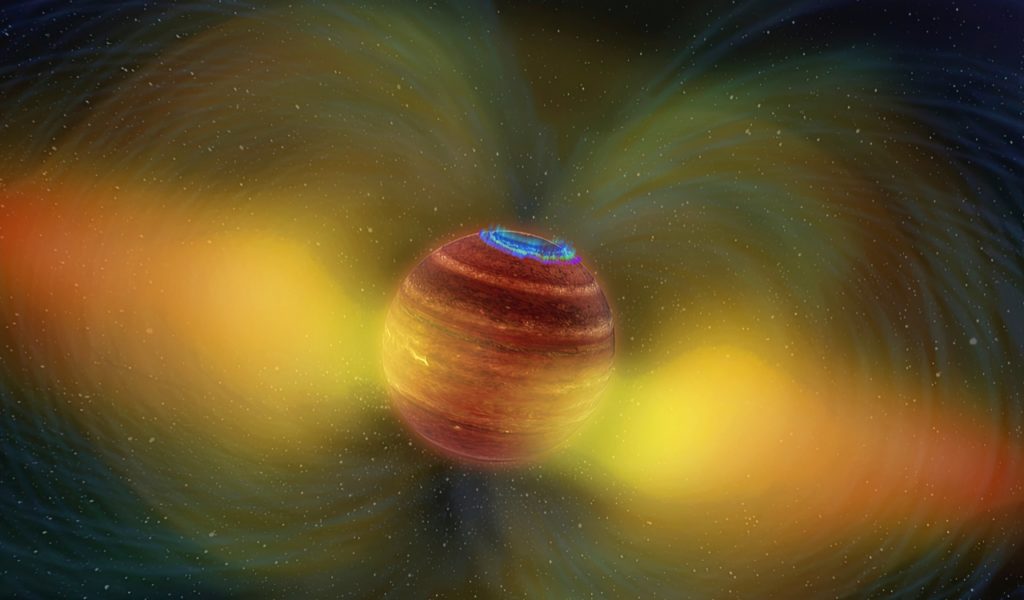Something major has happened in the field of space today. For the first time in history, astronomers managed to spot a band of radiation surrounding an object outside our solar system. To find the first radiation belt outside our system is incredible and a major discovery that is rocking the field of science.
A belt of energetic electrons are encircling a stellar body roughly the size of Jupiter roughly 18 lightyears from Earth. As electrons move, they radiate radio waves. Therefore, it was always assumed we’d spot something like this eventually as our equipment improved.
Such radiation belts give insight into the shape of a stellar object’s magnetic field. Yet it also helps us know about its interior structure. This is true even if it has surrounding objects rotating around it such as moons.
Of course, in our solar system, every single planet with a worldwide magnetic field has radiation belts. Some have more than others, of course. Here on Earth, we have the Van Allen belts, which are a ring of electrons captured from the Sun.
Meanwhile, Jupiter’s radiation belts get most of their particles from its notable volcanic moon, Io. In cases like this, the planet’s magnetic field will trap electrons in some sort of bubble around the planet. Think of it like capturing fireflies in a jar. They will continue to shine inside the jar just as they would outside of it.
What Led To The Discovery

The University of California – Santa Cruz Astronomer Melodie Kao and her colleagues wanted to find similar radiation belts outside our solar system. This led them to observe a Jupiter-sized object called LSR J1835+3259. Apparently, people hate just giving names to things.
The team observed this object with a network of 39 radio dishes spanning all over the world, from Hawaii to Germany. Altogether, the dishes effectively created a radio telescope about as wide as our entire planet.
Of course, due to things like our atmosphere getting in the way of radio dishes and many satellites, it is often hard to get a lot of data. At least, not when compared to space telescopes. Having dishes all over the world means they’ll never have a problem keeping track of the stellar object.
The team managed to spot a belt that looks a lot like Jupiter’s. However, it was actually 10 million times brighter than the red planet. The object is nearly 80 times as massive as Jupiter too. That puts it on par with being a diminutive star or even a massive brown dwarf. These dwarf stars are dim starlike bodies not big enough to sustain hydrogen fusion.
Mystery Still To Solve & The Future

It is currently still a mystery where the electrons came from. This object does not orbit any star and it does not even emit flares. A volcanic satellite would make sense to do this, but Kao and her team still feel that is only speculative.
The fact that they discovered the first radiation belt outside our solar system is still a major accomplishment they can hang their hat on. It is thought that this discovery will help researchers interpret future data from exoplanets in the future even if astronomers cannot see belts directly.
Kao claimed that electromagnetism is still in its infancy. Therefore, she claimed, “Until we can characterize exoplanet magnetic fields, we’ll miss entire segments of their life stories.”
The question we need to ask is, now that astronomers have discovered the first radiation belt outside our solar system…what other “firsts” will they discover?